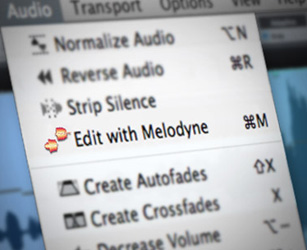Celemony Introduces New “ARA” Extension For Plug-In Interfaces
Celemony Software has developed a new extension for existing audio plug-in interfaces – “ARA Audio Random Access”.
ARA expands the communication between plug-in and DAW, affording the plug-in musical access to the audio data. Developed by Celemony in collaboration with Presonus, ARA presently connects the Presonus DAW Studio One 2, shipping this fall, with the current Versions 1.3 of Melodyne. Other manufacturers and products are expected to follow.
According to Celemony…
“The plug-in interfaces widely used today – such as VST, AU and RTAS – still work essentially the way analog mixers did in the past: a plug-in only receives audio data from the DAW track at the moment of playback, and therefore knows nothing about the entire track – and nothing either, therefore, of the musical context.
“For reverb, echo and EQ, this view through a real-time keyhole may be good enough, but not for plug-ins like Melodyne that need an overview of the entire clip for the analysis of the musical context and the editing of notes, rhythms and tempo. Previously, a time-consuming transfer of the audio file to the plug-in was required, but with ARA things are now far simpler:
As an extension of the existing plug-in interfaces, ARA opens an additional channel of communication through which the DAW and plug-in can exchange information about the audio file, tempo, pitch, rhythm and much more, which allows them to work together considerably more closely. The plug-in is closer to what is happening in the DAW and can therefore work more smoothly and effectively; the DAW, for its part, is able to integrate the plug-in far better and make more targeted use of it – exactly as though it were part of the DAW.
A good example of the greatly enhanced workflow with ARA is the interaction between Presonus Studio One 2 and Melodyne. With ARA, Melodyne is seamlessly integrated into Studio One and serves there as an alternative to the normal waveform editor: audio segments are opened directly in Melodyne and follow automatically when moved and copied as well as changed in tempo or time signature. Studio One, for its part, uses Melodyne for high-quality time stretching and to derive information about the musical content, i.e. for Audio-to-MIDI via drag-and-drop and for the evaluation of Melodyne’s tempo recognition.”
Watch the following videos for more information on the technology and the application / ARA integration with Studio One:
Showcase of ARA/Melodyne in Studio One:
For further information, visit: http://www.celemony.com/ara
Please note: When you buy products through links on this page, we may earn an affiliate commission.







